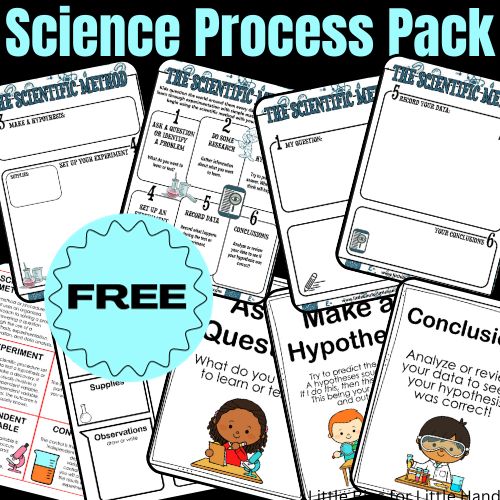Can you bend water? Yes, you can with static electricity and this super simple experiment! Although this science experiment may seem reserved for magic, bending water is a fascinating demonstration of static electricity’s principles. In this post, we’ll uncover the science behind this balloon experiment and show you how to bend water with static electricity at home or in the classroom.
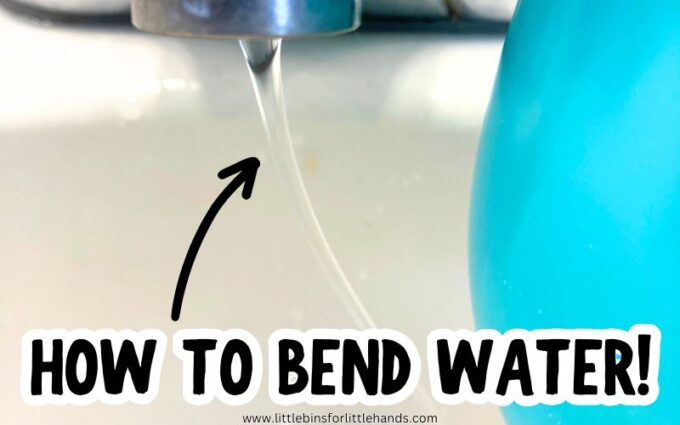
Understanding Static Electricity
Before we bend water with a balloon, let’s take a moment to understand static electricity. At its core, static electricity is the imbalance of electric charges within or on the surface of a material. When two objects rub against each other, electrons can be transferred from one surface to another, resulting in one object becoming positively charged and the other negatively charged.
There are many easy and fun ways to explore static electricity with balloons, such as the rolling can experiment, jumping hearts, or electric cornstarch.
Learn More: Static Electricity
The Balloon and Water Experiment
Let’s get to the fun part – bending water with a balloon. Here’s what you’ll need:
- A balloon
- A faucet or a source of running water
STEP 1: Inflate the Balloon: Start by securely inflating and tying the balloon. The exact balloon size doesn’t matter, but larger balloons may be easier to work with. Play around with different sizes!
STEP 2: Generate Static Electricity: Rub the balloon against your hair or a wool cloth. This friction will transfer electrons from your hair or the fabric to the balloon’s surface, giving it a negative charge. You may need to rub the balloon for about 20-30 seconds to generate a significant charge.
STEP 3: Approach the Water: Set the faucet to a slow stream, but more than a trickle. Bring the charged balloon close to a faucet’s stream. Position the balloon so that it is near but not touching the water.
STEP 4: Observe: As you bring the charged balloon close to the water, you’ll notice something incredible—the stream of water will bend towards the balloon as if by magic! You can even control the direction of the water’s bend by moving the balloon closer or farther away. Test different directions!
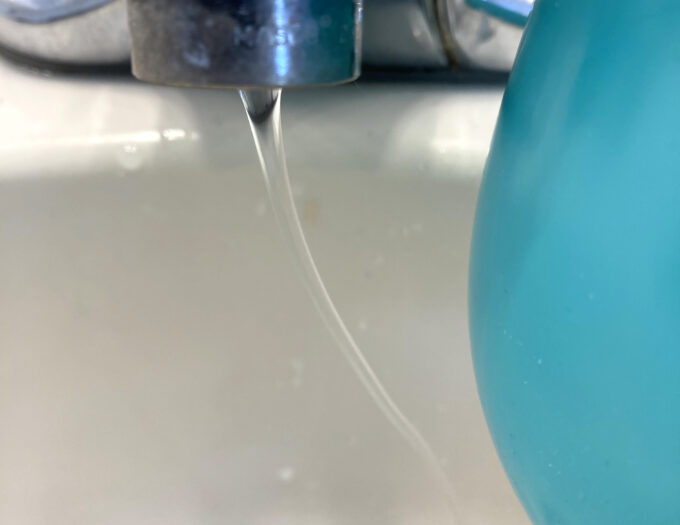
Bending Water Static Electricity Science
So, what’s going on here? It’s not magic; it’s science!
The key lies in the attraction between the negatively charged balloon and the positively charged water molecules.
When you rub the balloon against your hair or a cloth, it acquires a negative charge.
Water molecules are polar, meaning they have a positively charged end (hydrogen atoms) and a negatively charged end (oxygen atoms).
Bringing the negatively charged balloon close to the stream of water induces a separation of charges within the water molecules. The positively charged ends of the water molecules are attracted to the negatively charged balloon, causing the stream of water to bend towards it.
Try Electric Cornstarch Static Electricity!
Add the Scientific Method
Go ahead and add the scientific method! Bending water with a balloon is not only a fascinating demonstration of static electricity but also a great way to spark curiosity and explore the wonders of science. Experiment with different variables—try using balloons of different sizes or materials, varying the distance between the balloon and the water, or even testing it with different types of liquids.
So, the next time you want to indulge your inner scientist, grab a balloon and a faucet and prepare to bend water with static electricity.
Learn More: All About the Scientific Method
More Static Electricity Experiments
- Rolling Can
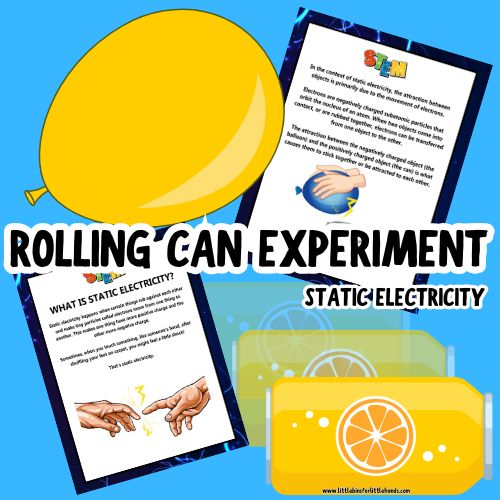
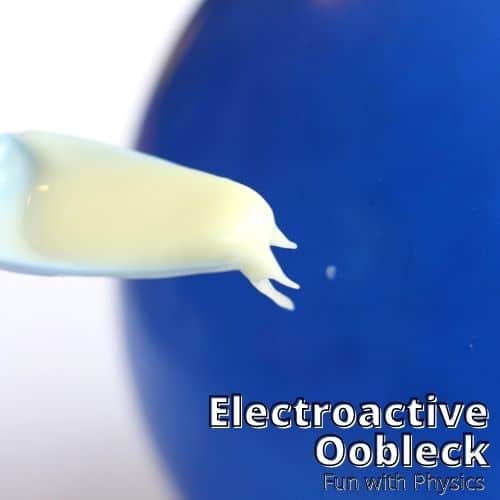
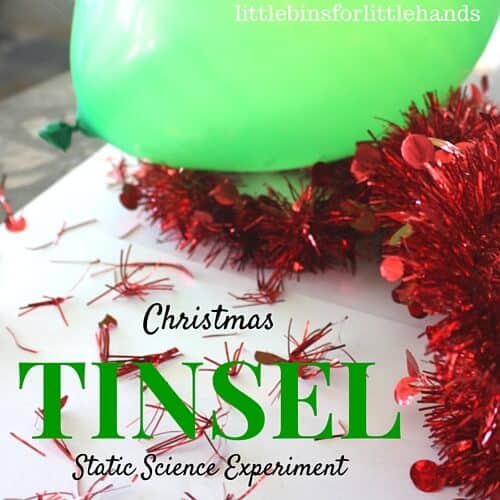
Helpful Science Resources To Get You Started
Here are a few resources that will help you introduce science more effectively to your kiddos or students and feel confident yourself when presenting materials. You’ll find helpful free printables throughout.
- Best Science Practices (as it relates to the scientific method)
- Science Vocabulary
- 8 Science Books for Kids
- All About Scientists
- Free Science Worksheets
- Science Supplies List
- Science Tools for Kids
More Science Experiments for Kids
Try one of these the next time you want to explore science!
- Floating Egg
- Naked Egg
- Popsicle Stick Catapult
- Lava Lamp
- Oobleck Recipe
- Bubble Science
- Baking Soda and Vinegar
- Balloon Experiment
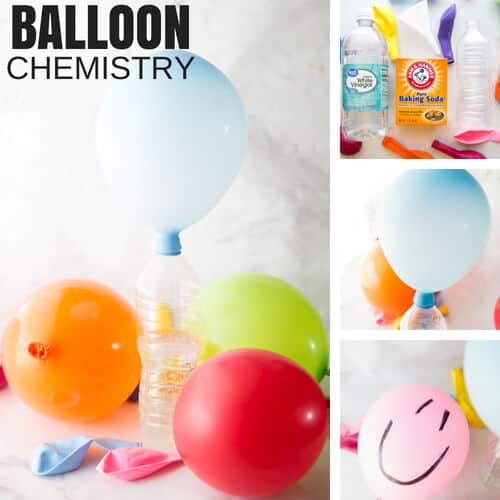

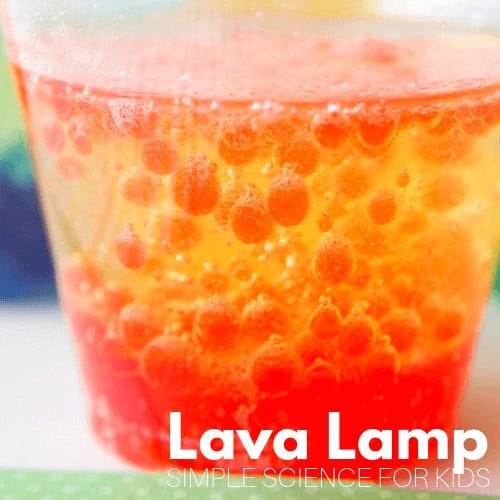
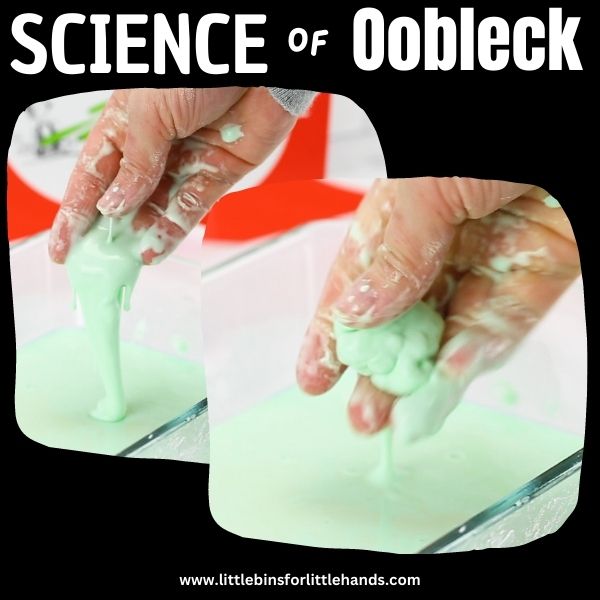


Printable Science Projects For Kids
If you’re looking to grab all of our printable science projects in one convenient place plus exclusive worksheets and bonuses like a STEAM Project pack, our Science Project Pack is what you need! Over 300+ Pages!
- 90+ classic science activities with journal pages, supply lists, set up and process, and science information. NEW! Activity-specific observation pages!
- Best science practices posters and our original science method process folders for extra alternatives!
- Be a Collector activities pack introduces kids to the world of making collections through the eyes of a scientist. What will they collect first?
- Know the Words Science vocabulary pack includes flashcards, crosswords, and word searches that illuminate keywords in the experiments!
- My science journal writing prompts explore what it means to be a scientist!!
- Bonus STEAM Project Pack: Art meets science with doable projects!
- Bonus Quick Grab Packs for Biology, Earth Science, Chemistry, and Physics



